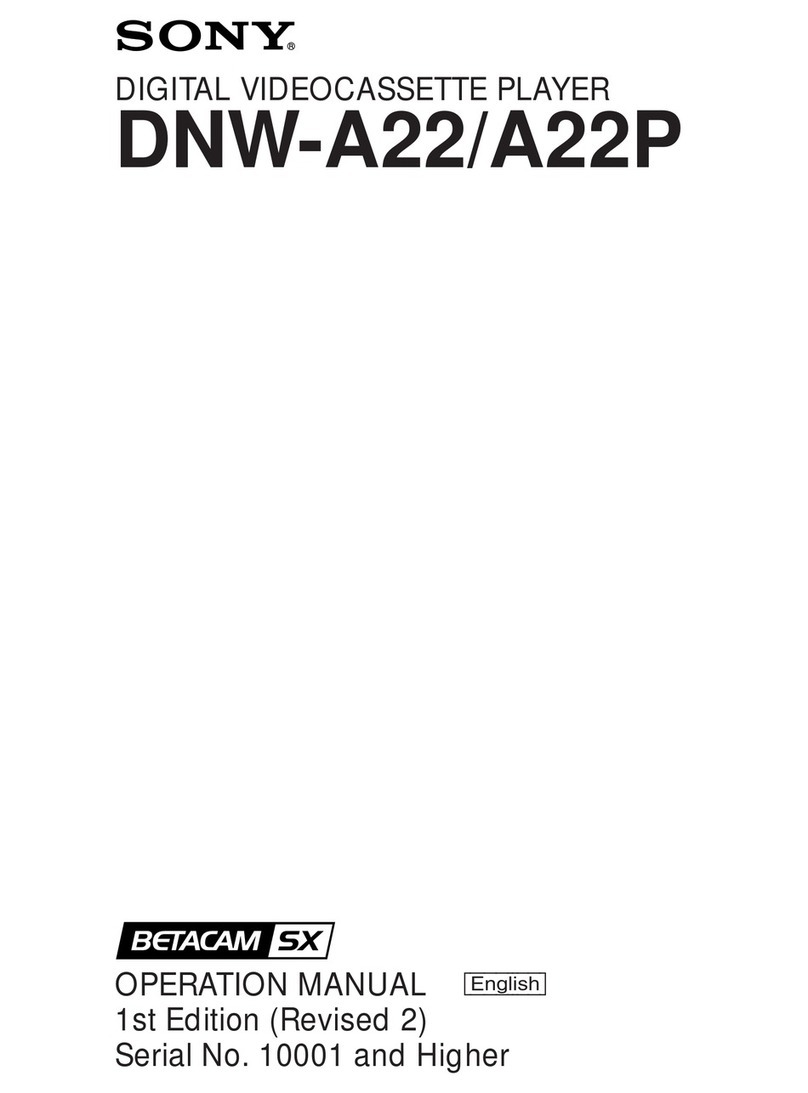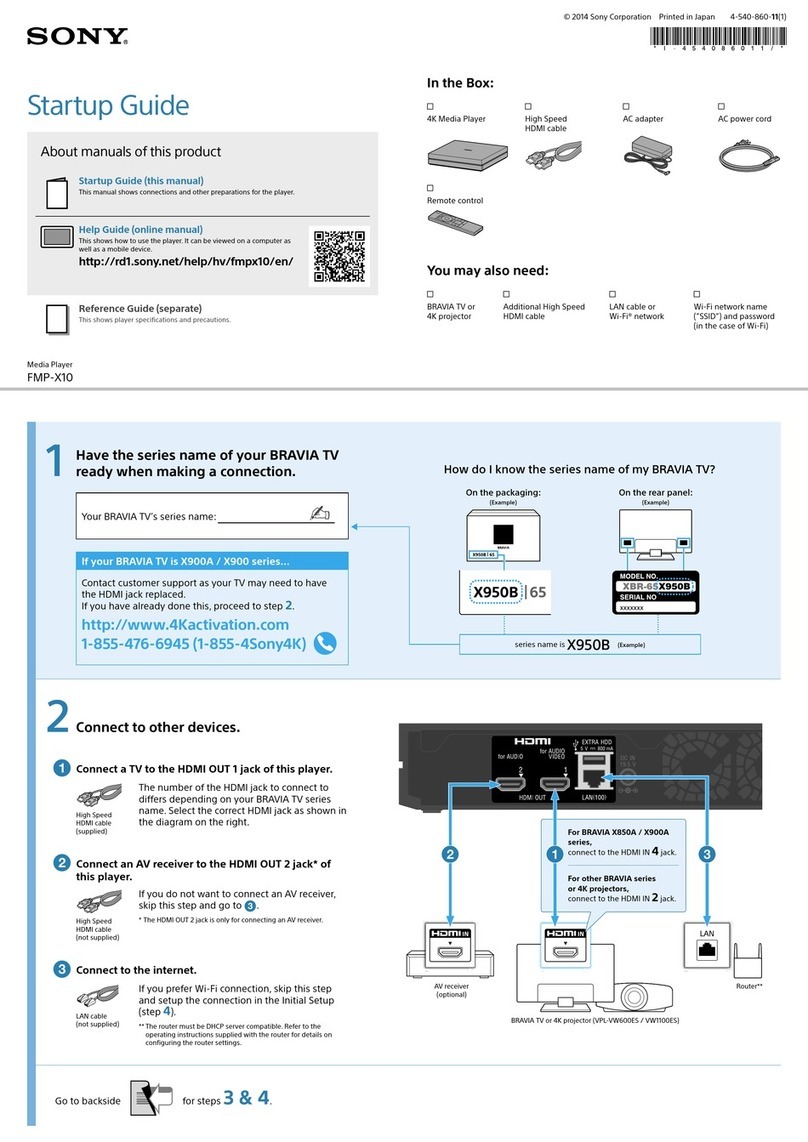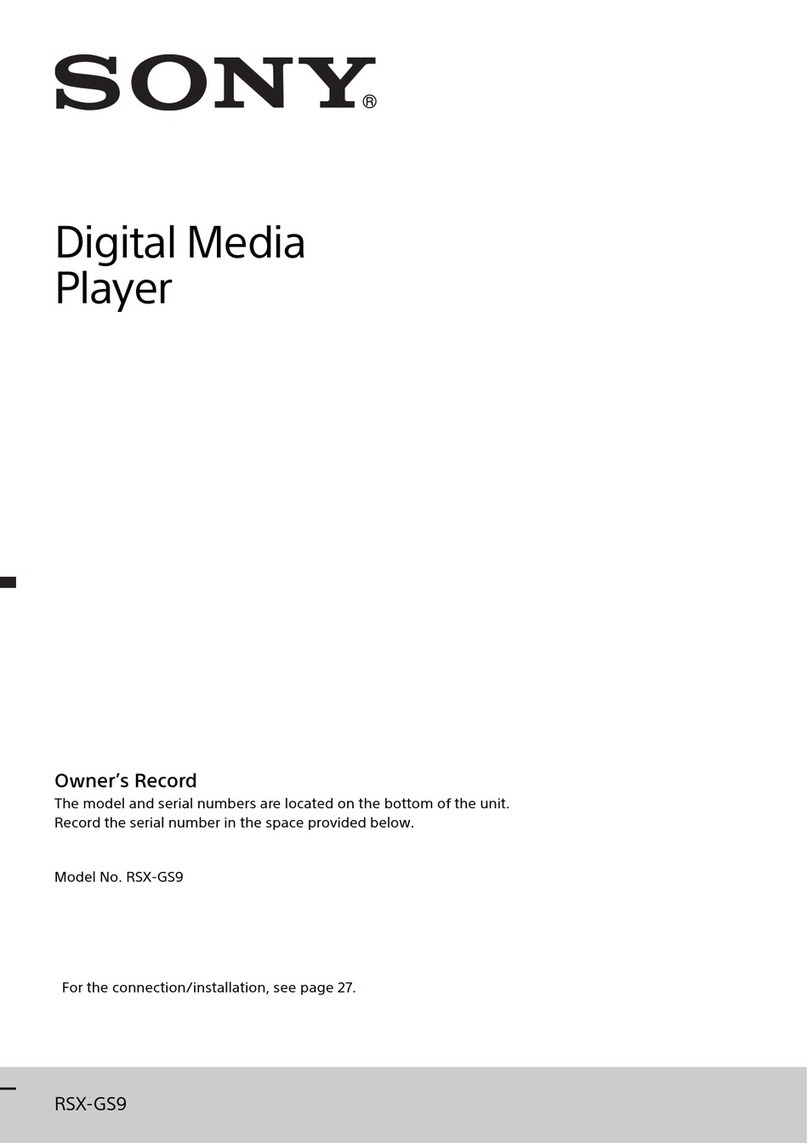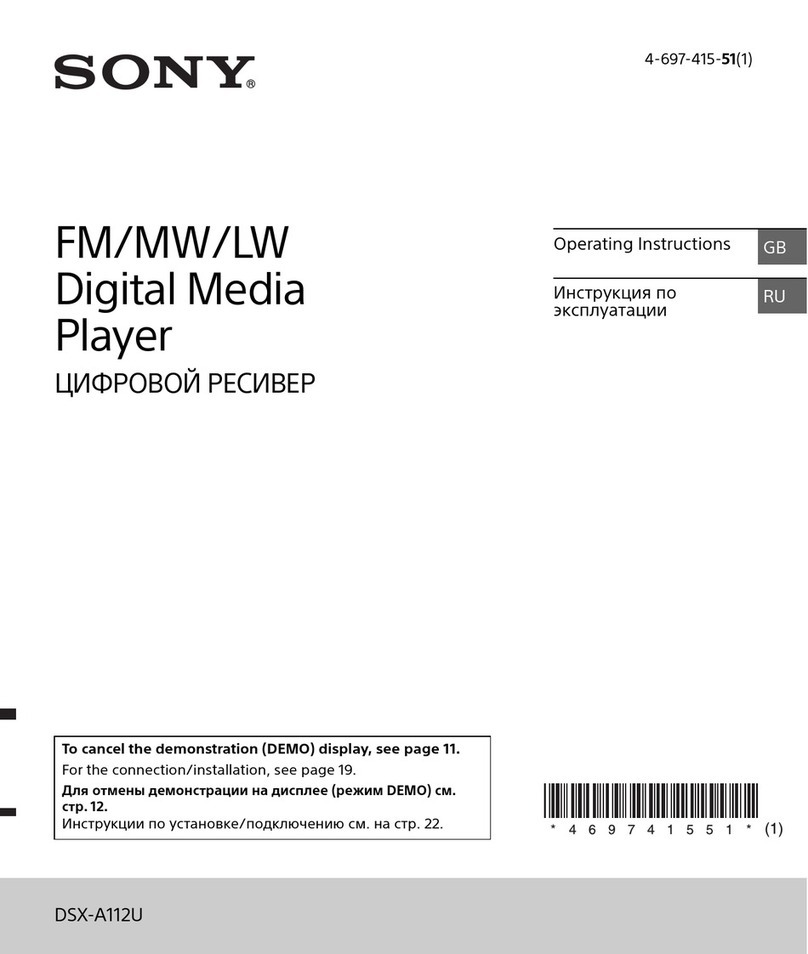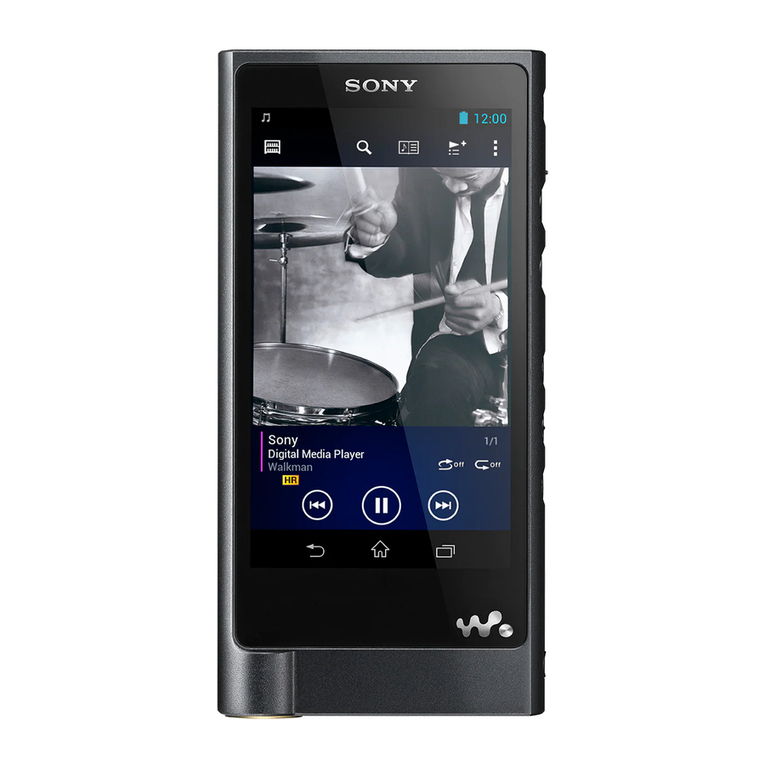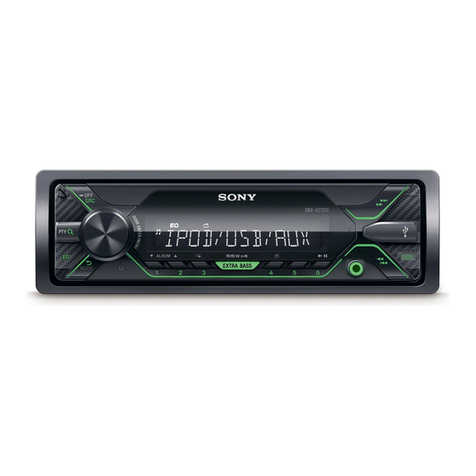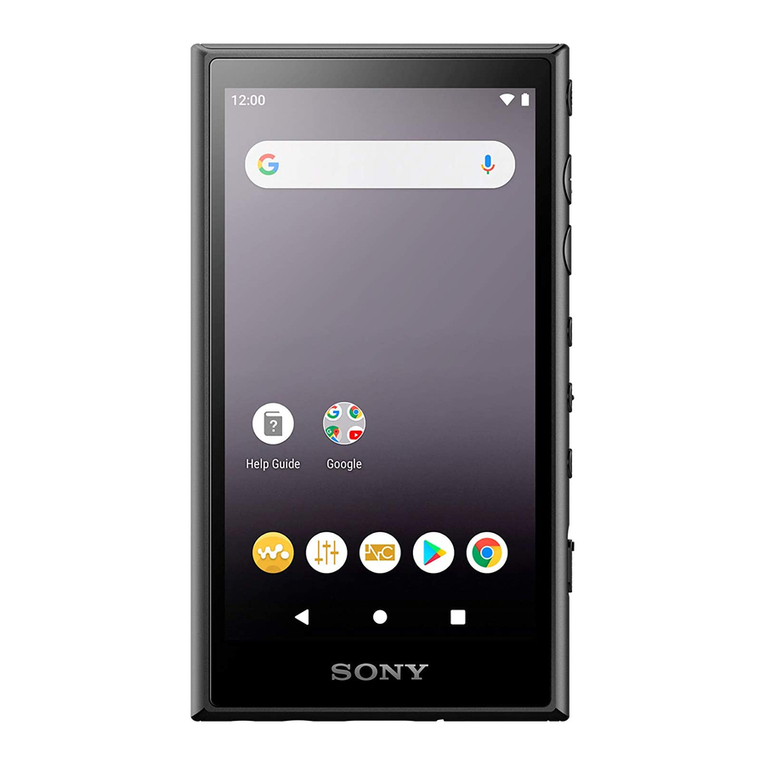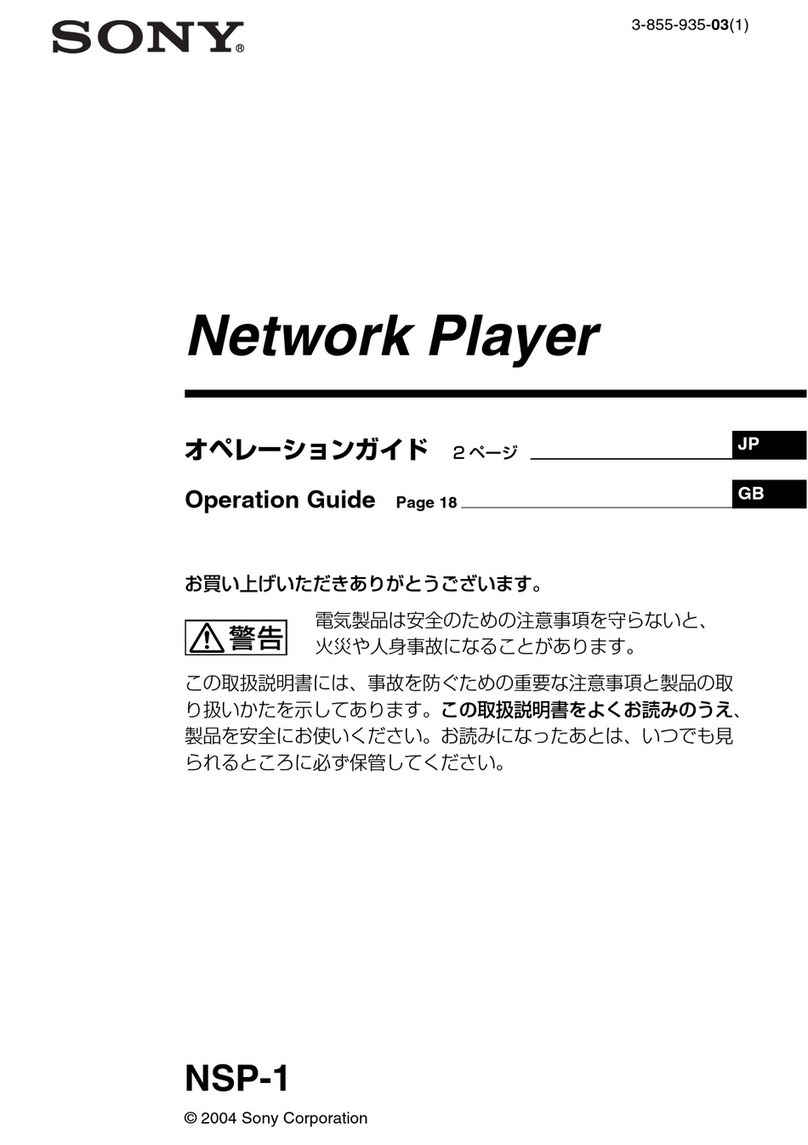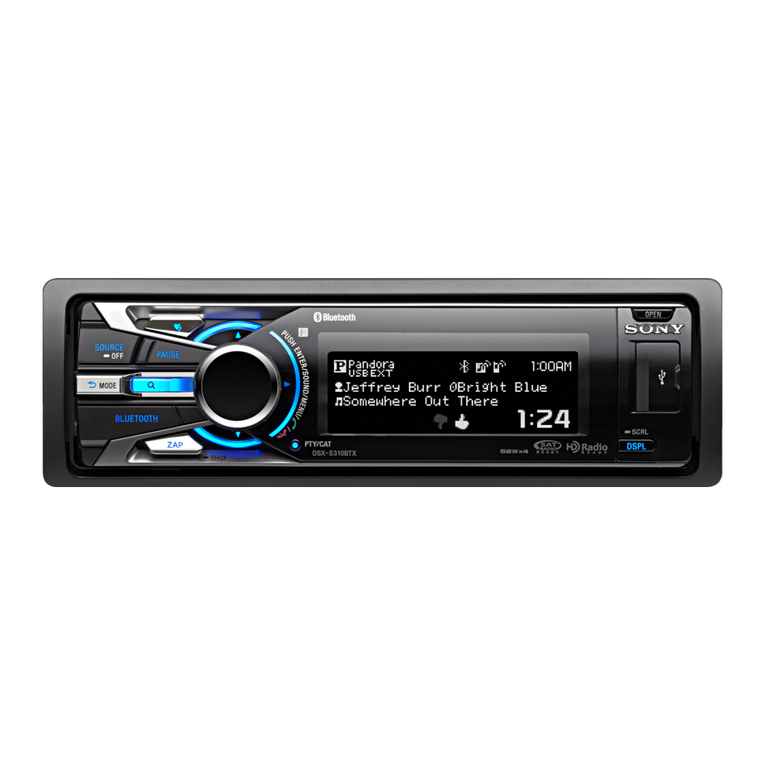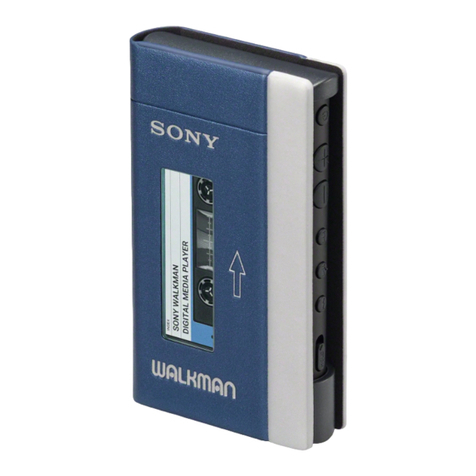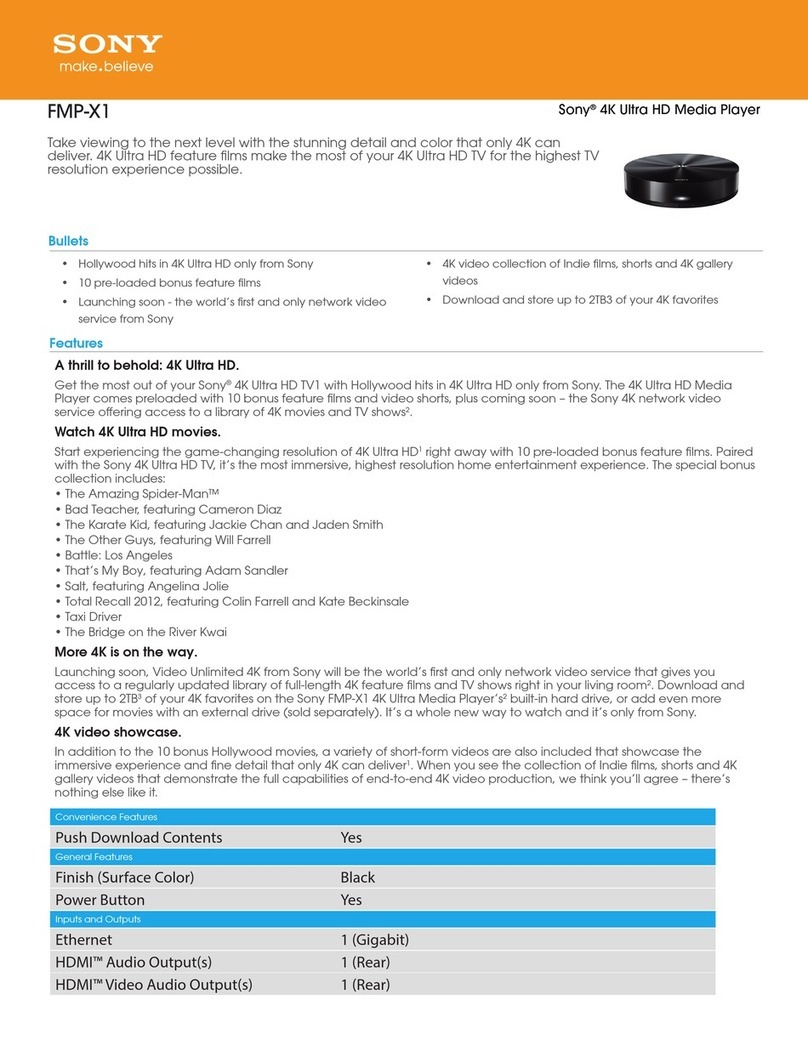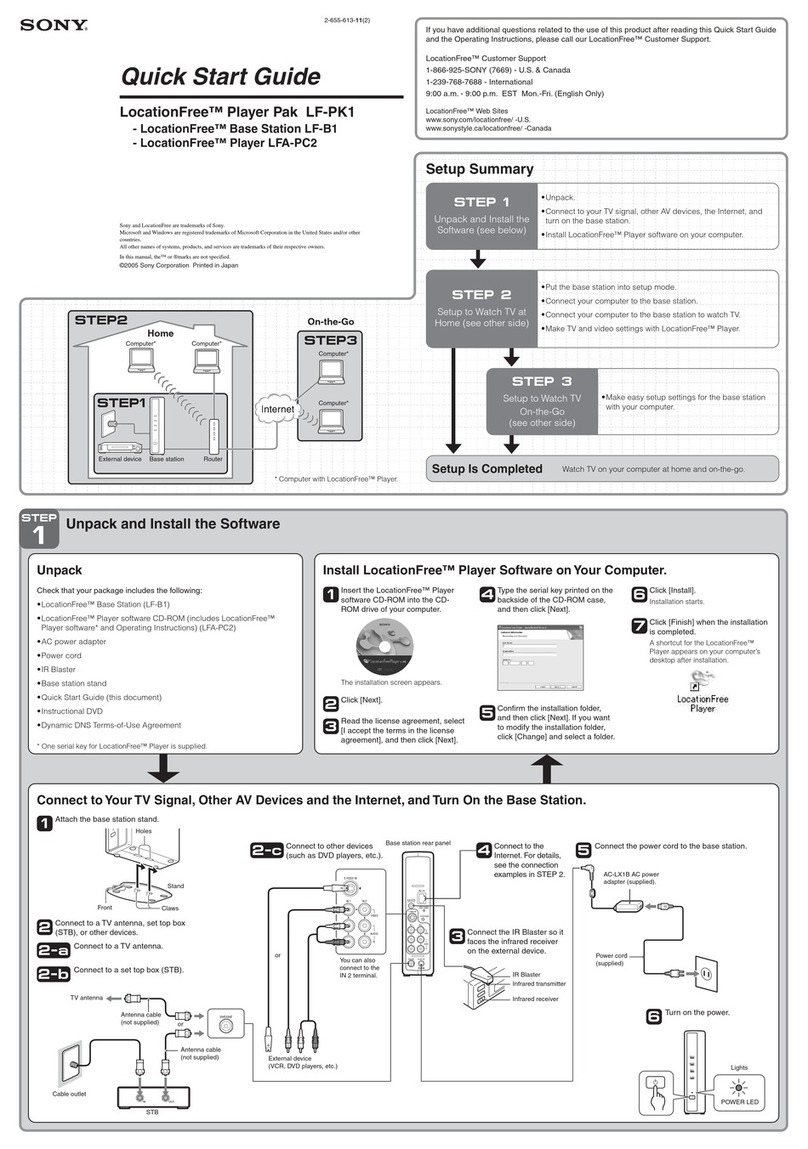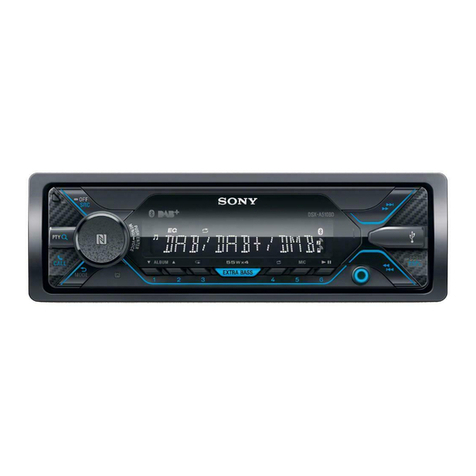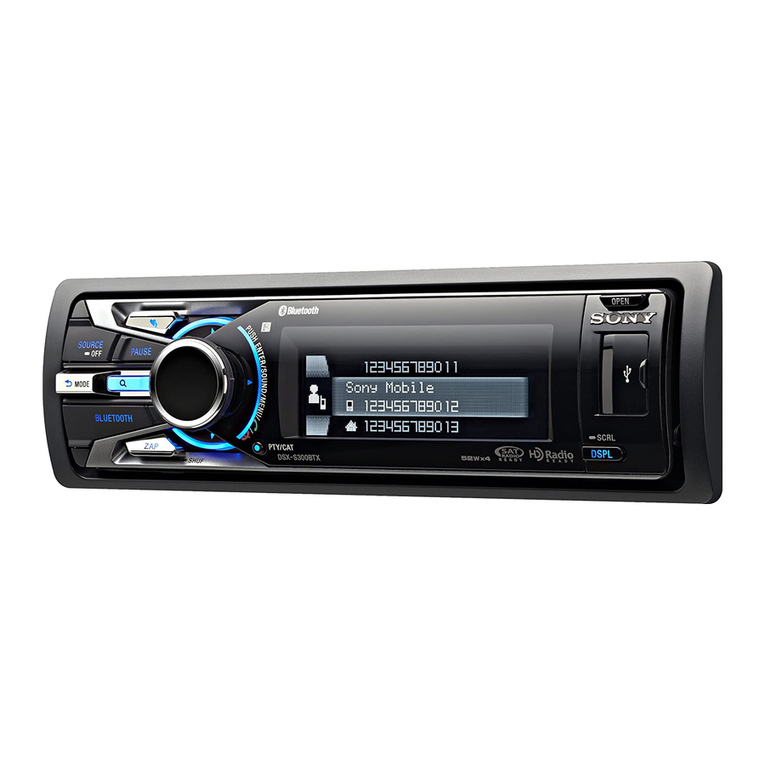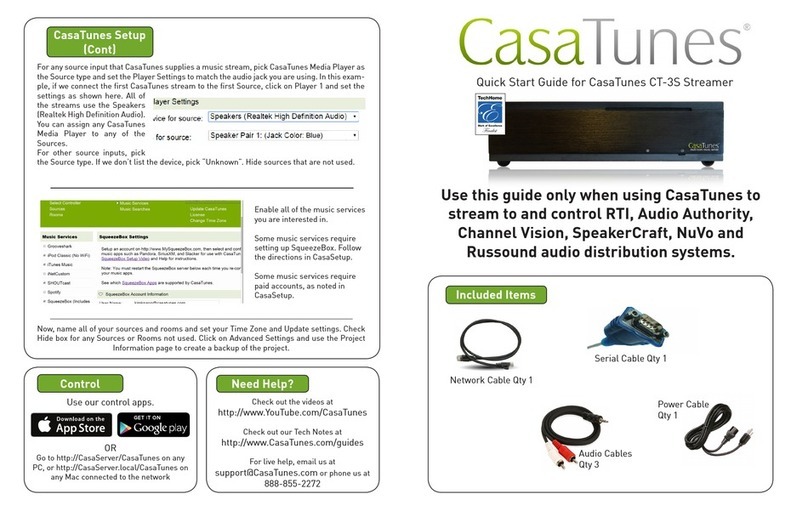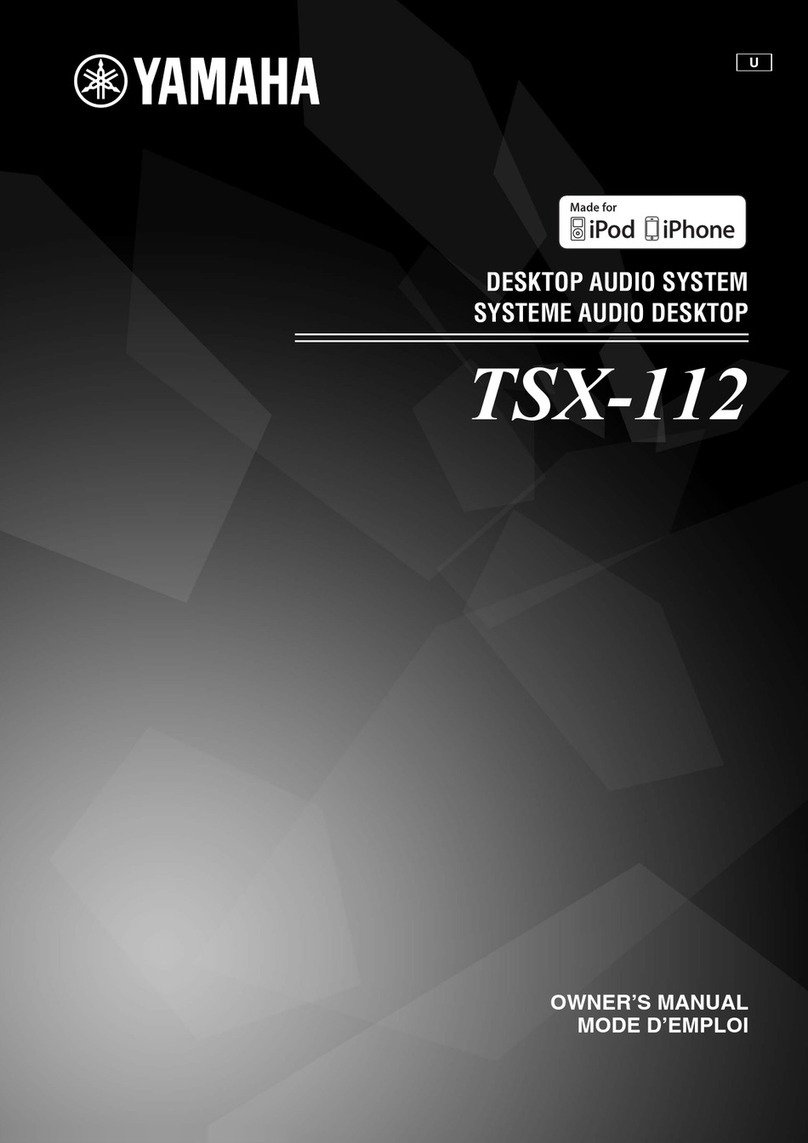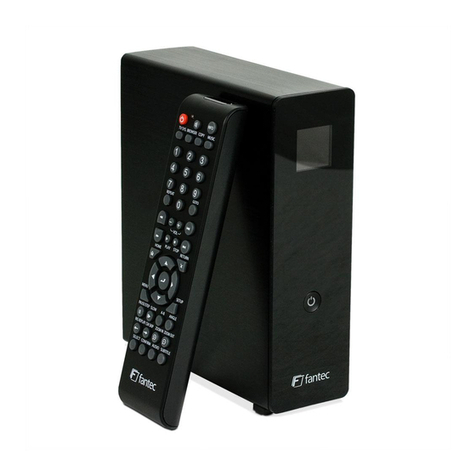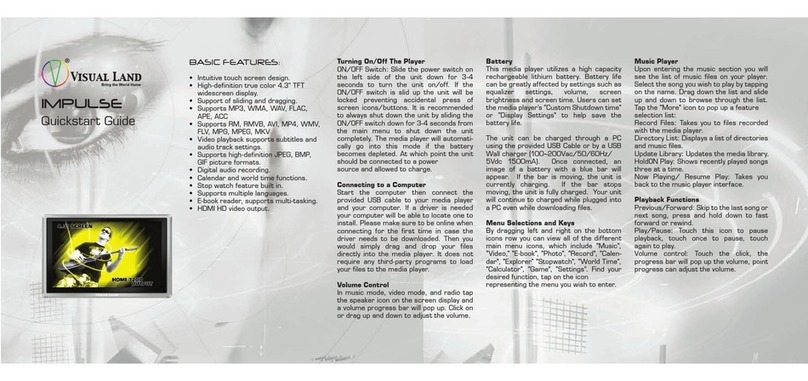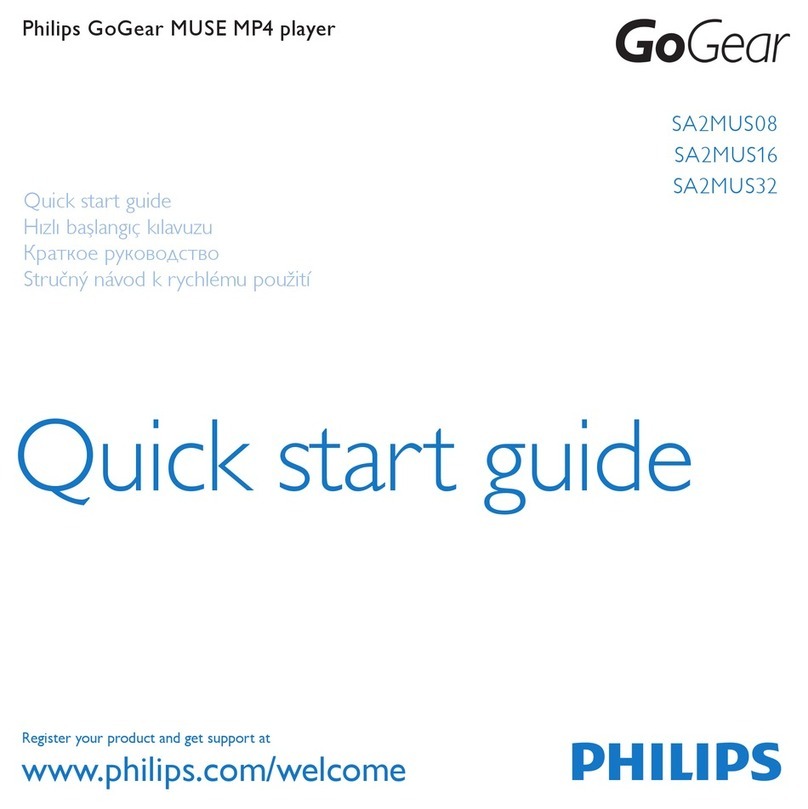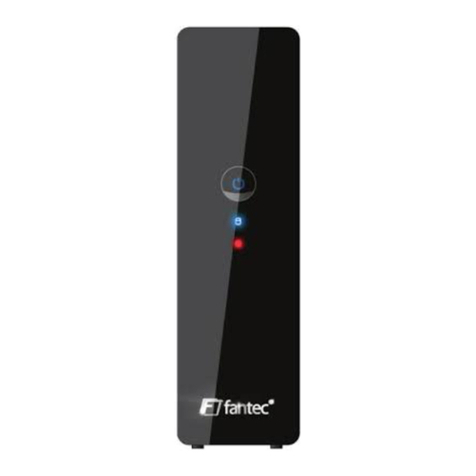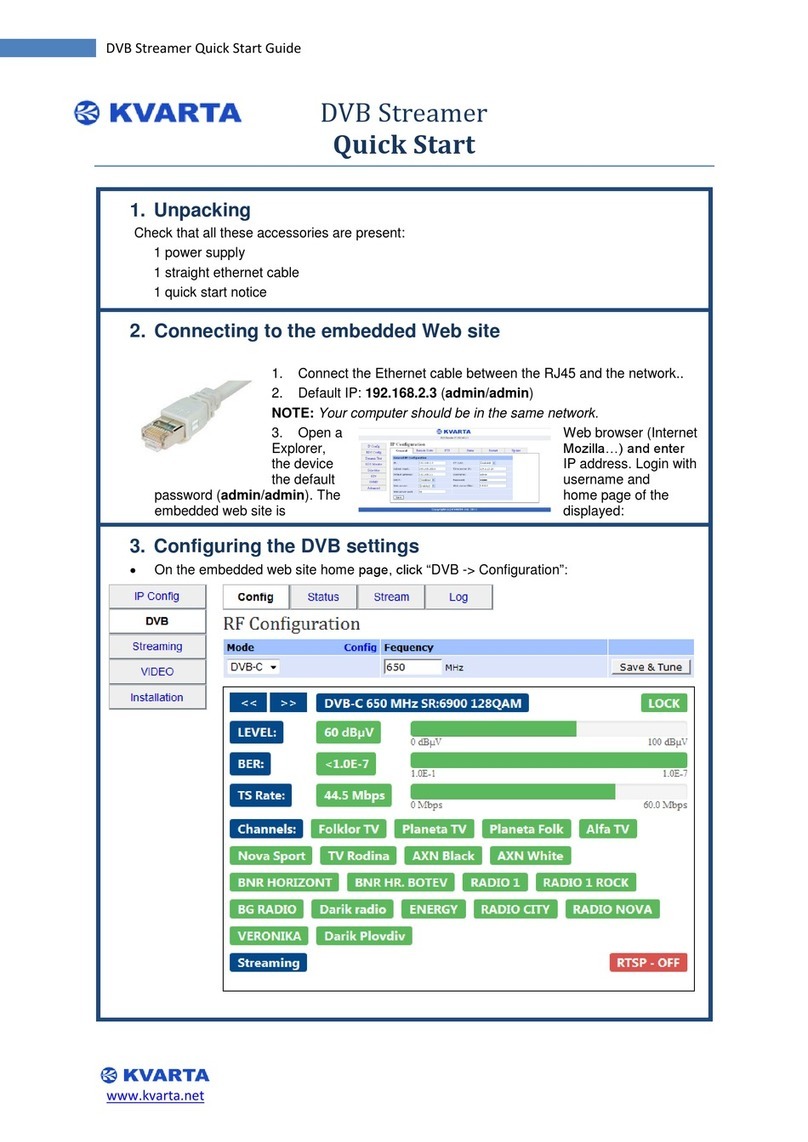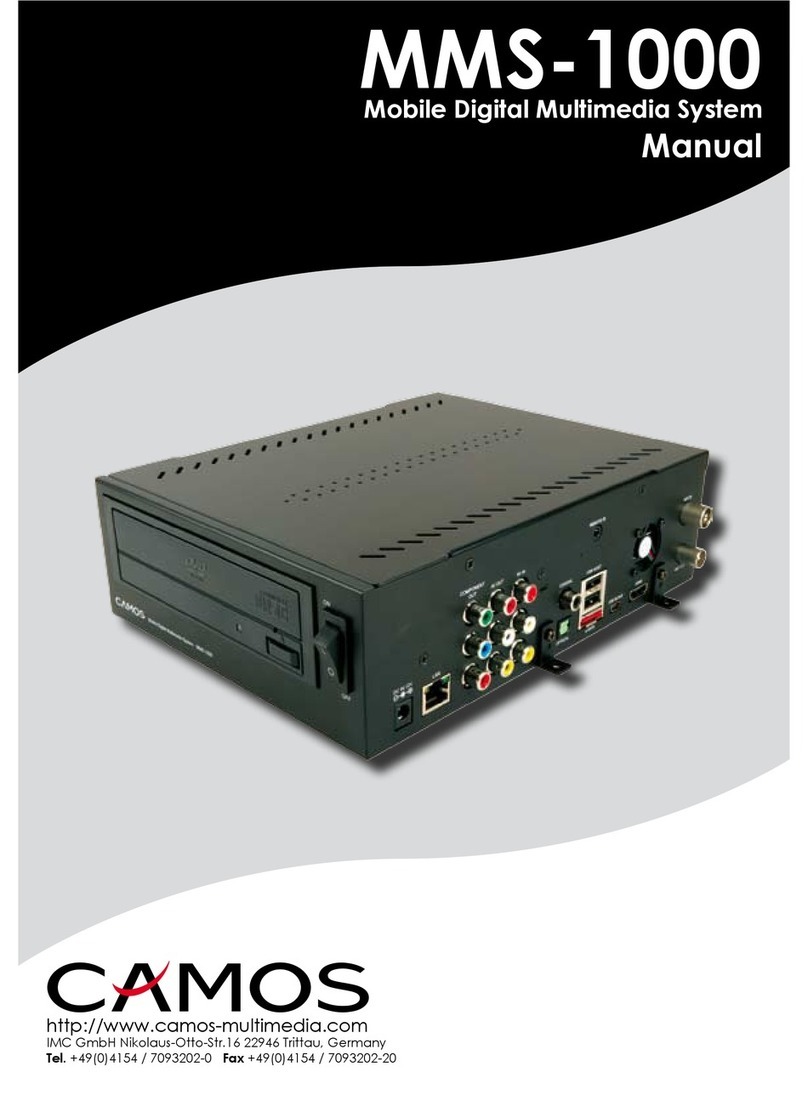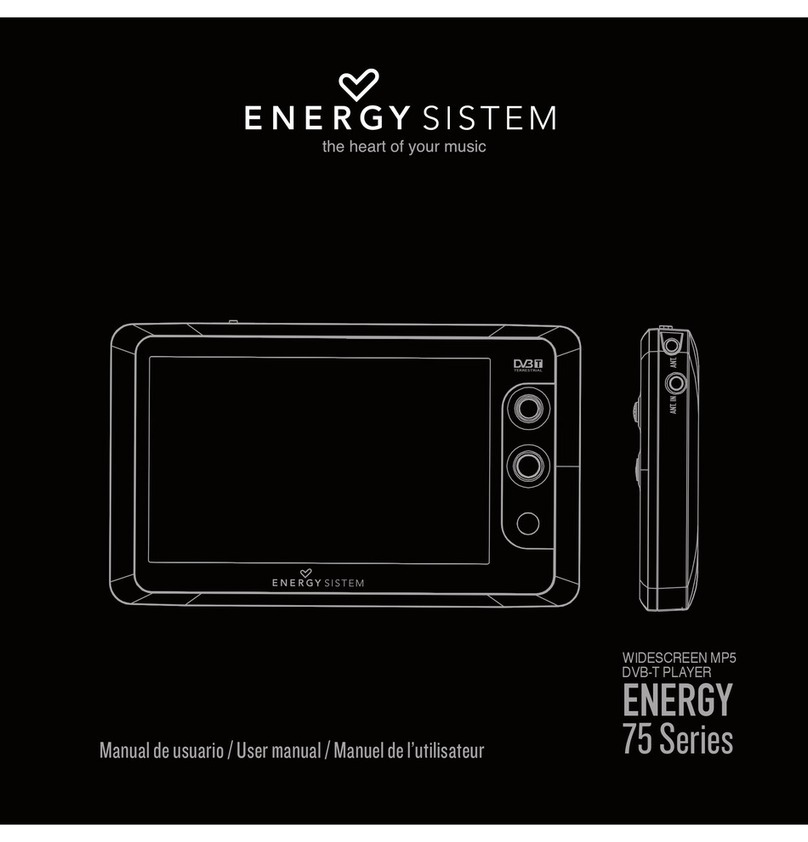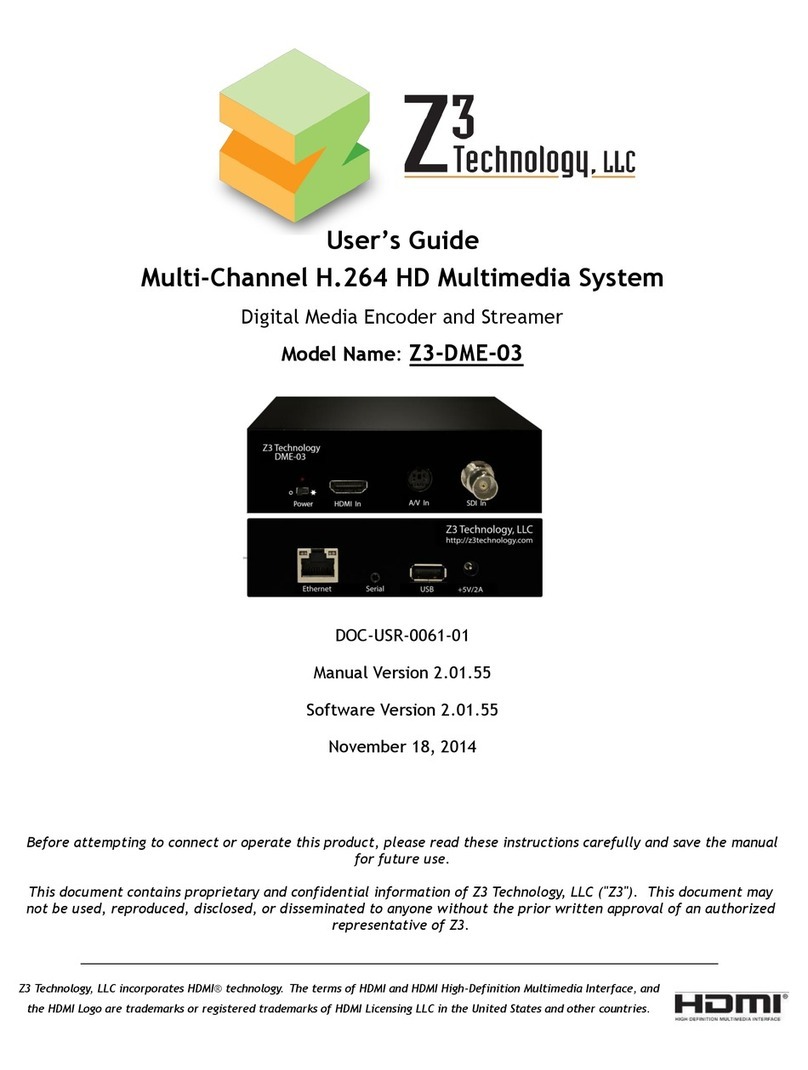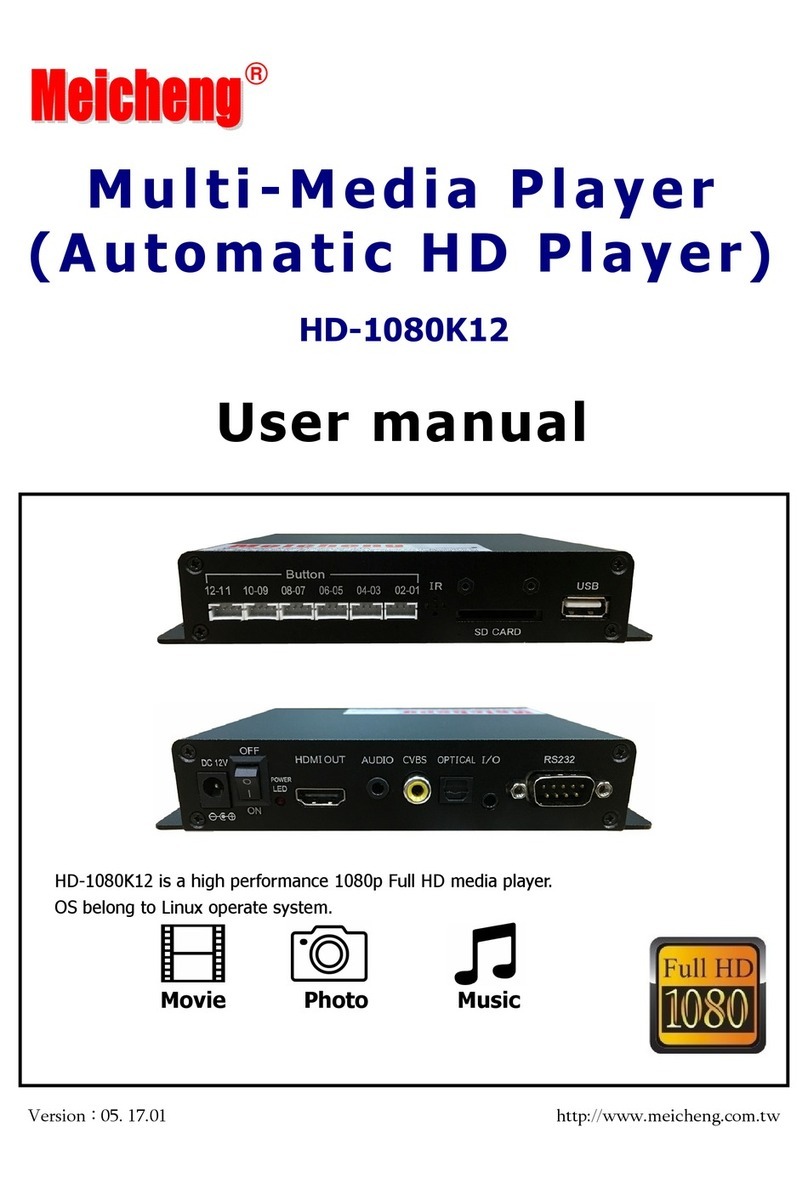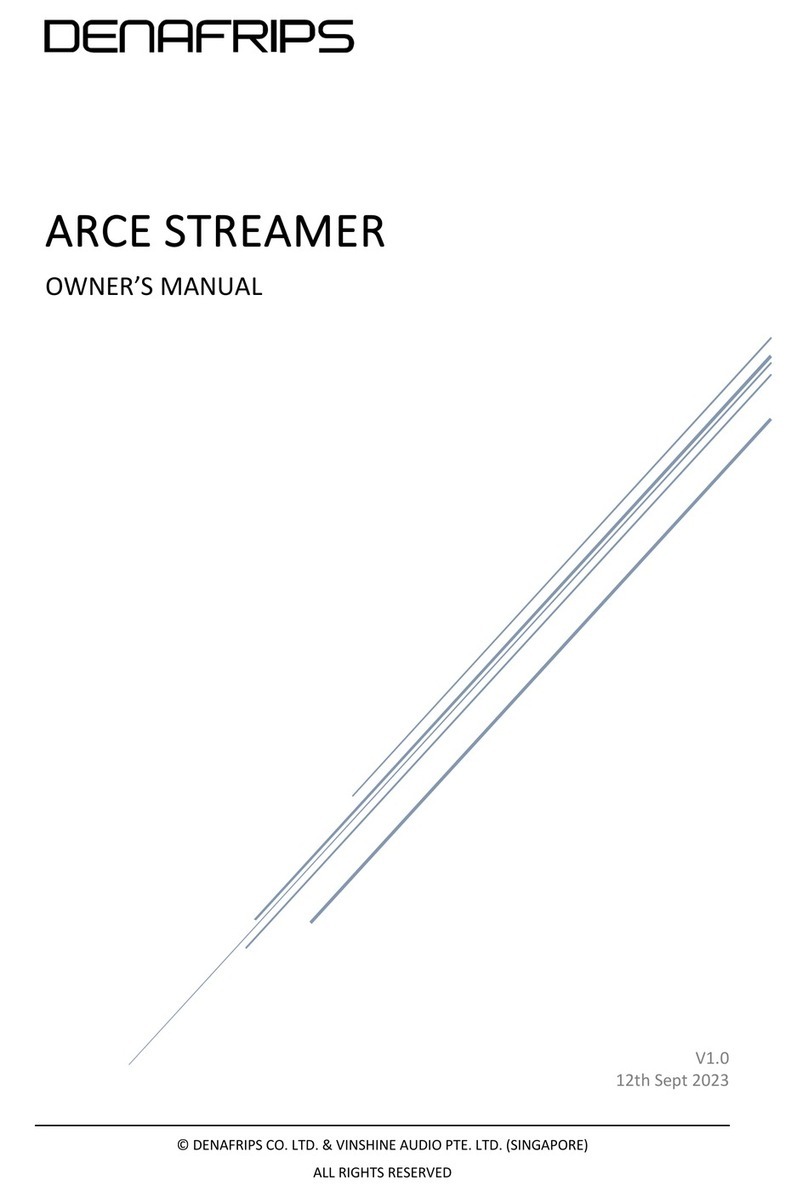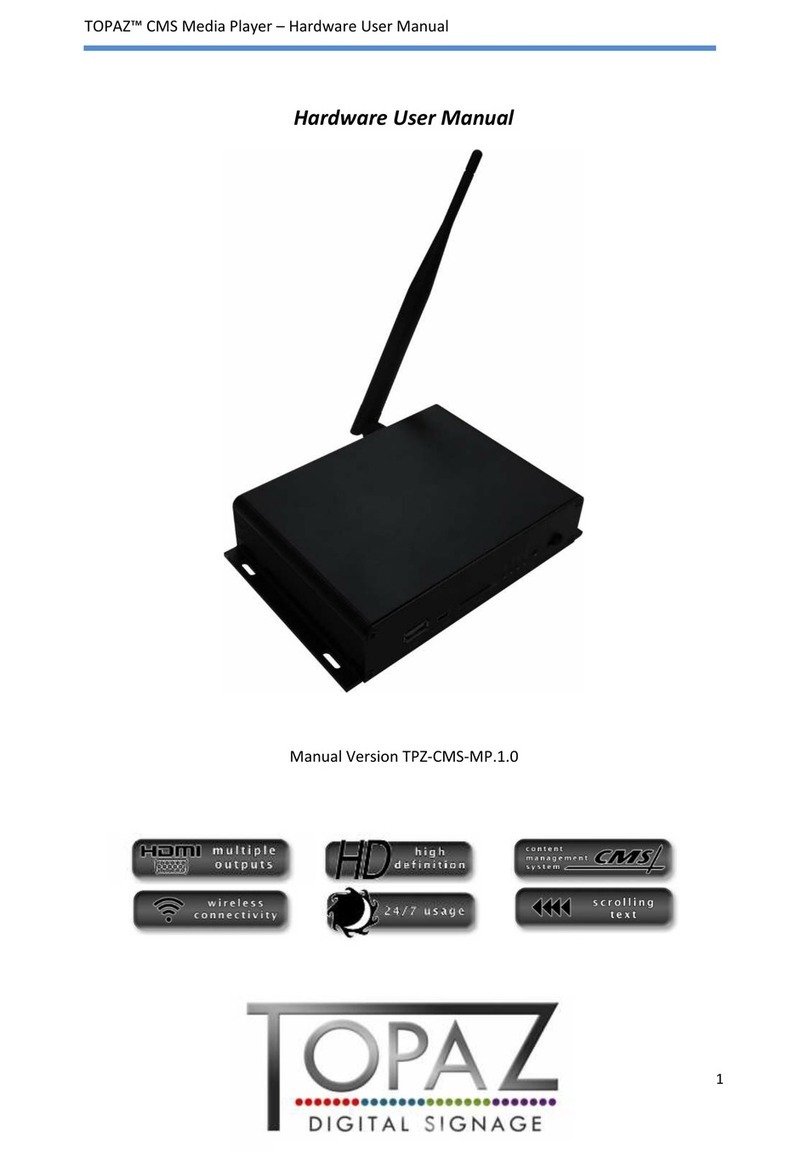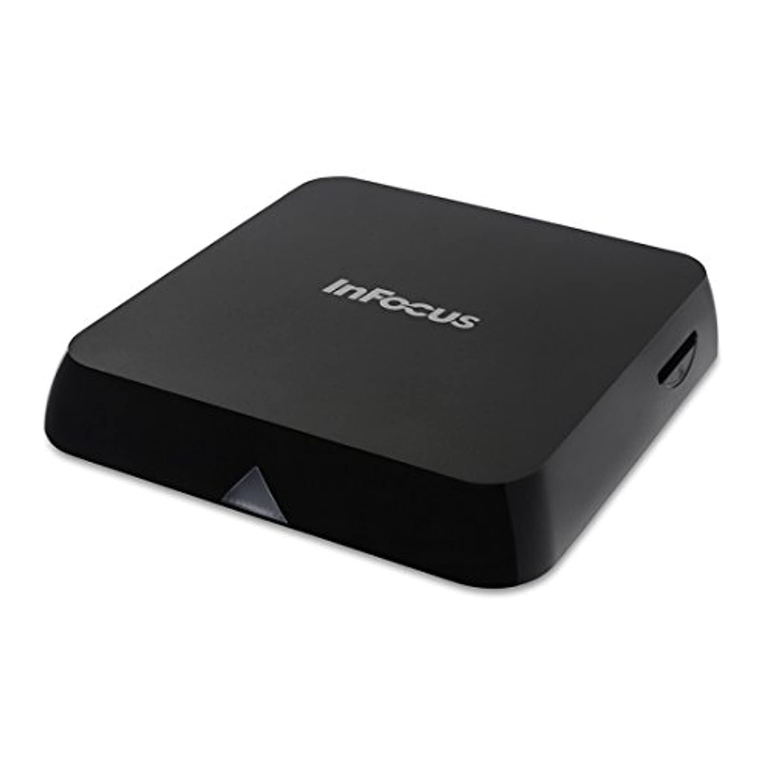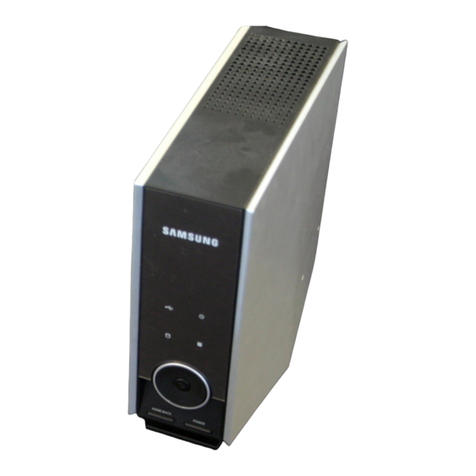
NWZ-S763/S763BT/S764/S764BT/S765
2
Output (headphones)
Frequency response
20 to 20,000 Hz (when playing data file, single signal measurement)
FM radio
FM Frequency range
87.5 to 108.0 MHz
IF (FM)
128 kHz
Antenna
Headphone cord antenna
Bluetooth Specifications
Communication system: Bluetooth specification version 2.1+EDR (*1)
Output: Bluetooth specification Power Class 2
Maximum communication range: Line of sight approx. 10 meters (30 feet) (*2)
Frequency band: 2.4 GHz band (2.4000 GHz - 2.4835 GHz)
Modulation method: FHSS
Compatible Bluetooth profiles (*3)
A2DP (Advanced Audio Distribution Profile)
AVRCP (Audio Video Remote Control Profile)
OPP (Object Push Profile)
Supported Codec (*4): SBC (*5)
(*1) EDR stands for Enhanced Data Rate.
(*2) The range may vary depending on the communication environment.
(*3) Bluetooth profiles are standardized according to the purpose of the Bluetooth device.
(*4) Codec indicates the audio signal compression and conversion format.
(*5) SBC stands for Subband Codec.
Interface
Headphone: Stereo mini-jack
WM-PORT (multiple connecting terminal): 22 pins
Hi-Speed USB (USB 2.0 compliant)
Operating temperature
5 °C to 35 °C (41 ºF to 95 ºF)
Power source
Built-in rechargeable lithium-ion battery
USB power (from a computer via a USB connector of your “WALKMAN”)
Charging time
USB-based charging
Approx. 3 hours (full charge), Approx. 1.5 hours (approx. 80 %)
Battery life (continuous playback)
Actual battery life may vary depending on settings. The estimated battery usage hours shown below are
based on typical usage conditions with “Basic setting of battery life measurement” as shown in the table
below.
Note
Even if your “WALKMAN” is turned off for an extended period, a small amount of battery power is still
consumed.
Battery life may vary depending on volume setting, conditions of use, and ambient temperature.
nosinoitcnufhtooteulBffosinoitcnufhtooteulBcisuM
Playback at MP3 128 kbps Approx. 50 hours Approx. 12 hours
Playback at WMA 128 kbps Approx. 50 hours Approx. 12 hours
Playback at AAC-LC 128 kbps Approx. 48 hours Approx. 12 hours
Playback at Linear PCM 1,411 kbps Approx. 56 hours Approx. 12 hours
nosinoitcnufhtooteulBffosinoitcnufhtooteulBoediV
Playback at MPEG-4 384 kbps Approx. 10 hours Approx. 6 hours
Playback at AVC Baseline 384 kbps Approx. 10 hours Approx. 6 hours
Playback at WMV 384 kbps Approx. 10 hours Approx. 6 hours
nosinoitcnufhtooteulBffosinoitcnufhtooteulBoidarMF
Receiving FM broadcasting Approx. 20 hours -
Voice recording Bluetooth function is off Bluetooth function is on
-sruoh9.xorppAgnidroceR
Your “WALKMAN” settings which affect battery life
Setting Basic setting of battery life
measurement
[Common Settings]
[Screen Off Timer] (*1) (*2) [30 Sec]
[Brightness] (*3) [3]
[Battery Care] (*4) [Off]
[Music Settings]
[Equalizer] (*5) [None] (*6)
[VPT (Surround)] (*5) [None]
[DSEE (Sound Enhance)] (*5) [Off]
[Clear Stereo] (*5) [Off]
[Dynamic Normalizer] (*5) [Off]
[DPC (Speed Control)] (*7) [Off]
[Display Lyrics] (*8) [On]
[Karaoke/Language Study] (*9) [Off]
[Bluetooth
Settings] [Wireless Playback Quality] [Prioritize Connection]
(*1) The [Off] setting shortens the battery life by about 80% compared with the [30 Sec] setting.
(*2) The longer the waiting time, the shorter the battery life for continuous music playback.
(*3) The [5] setting shortens the battery life for continuous video playback by about 45% compared with the [3]
setting.
(*4) The [On] setting shortens the battery life by about 10% compared with the [Off] setting.
(*5) Setting [Equalizer] to other than [None], [VPT (Surround)] to other than [None], [DSEE (Sound Enhance)] to
[On], [Clear Stereo] to [On] and [Dynamic Normalizer] to [On] shortens the battery life for continuous music
playback by about 50% compared with setting them to [None] or [Off].
(*6) The default setting of your “WALKMAN” sold in the Latin America region is [Custom 1]. The [Custom 1]
setting shortens the battery life for continuous music playback by about 20% compared with the [None]
setting.
(*7) The [x2.0] setting shortens the battery life for continuous music playback by about 70% compared with the
[Off] setting.
(*8) The [On (Screen Always On)] setting shortens the battery life for continuous music playback by about 85%
compared with the [On] setting.
(*9) The [Maximum Karaoke Mode] setting shortens the battery life for continuous music playback by about 85%
compared with the [Off] setting.
Display
2-inch, TFT color display with white LED-backlight, QVGA (320 × 240 pixels), 262,144 colors
Dimensions (w/h/d, projecting parts not included)
Approx. 43.6 mm × 97.5 mm × 7.9 mm (1 3/4 inches × 3 7/8 inches × 5/16 inches)
Dimensions (w/h/d)
Approx. 44.3 mm × 97.5 mm × 8.4 mm (1 3/4 inches × 3 7/8 inches × 11/32 inches)
Mass
Approx. 57 g (2.1 oz)
Specifications for Bluetooth headphones (NWZ-S763BT/S764BT only)
Communication system
Bluetooth specification version 2.1+EDR (*1)
Output
Bluetooth specification Power Class 2
Maximum communication range
Line of sight approx. 10 meters (30 feet) (*2)
Frequency band
2.4000 GHz - 2.4835 GHz
Modulation method
FHSS
Compatible Bluetooth profiles (*3)
A2DP (Advanced Audio Distribution Profile)
AVRCP (Audio Video Remote Control Profile)
Supported Codec (*4)
SBC (*5)
Power source
Built-in Rechargeable lithium-ion battery
USB power (from a computer via a USB connector of the Bluetooth headphones)
Dimensions (w/h/d)
50.5 mm × 24.5 mm × 11.3 mm (2 inches × 31/32 inches × 15/32 inches)
Dimensions (w/h/d, upright position)
50.5 mm × 25.5 mm × 19.0 mm (2 inches × 1 1/16 inches × 3/4 inches)
Mass
Approx. 27 g (1.0 oz)
Battery life (continuous playback)
Approx. 4 hours
Charging time
USB-based charging
Approx. 2.5 hours
(*1) EDR stands for Enhanced Data Rate.
(*2) The range may vary depending on the communication environment.
(*3) Bluetooth profiles are standardized according to the purpose of the Bluetooth device.
(*4) Codec indicates the audio signal compression and conversion format.
(*5) SBC stands for Subband Codec.
Design and specifications are subject to change without notice.
Contents
“WALKMAN” (1)
Headphones (1)
Earbuds (Size S, L) (1)
Attachment (1)
Use when connecting your “WALKMAN” to the cradle (not supplied), etc.
Quick Start Guide
Software
The software is stored in the built-in flash memory of your “WALKMAN,” and includes the following
items. For details on how to install, refer to “Quick Start Guide.”
Media Go
WALKMAN Guide
User Guide, etc.
NWZ-S763/S764/S765 only
USB cable (1)
NWZ-S763BT/S764BT only
Wireless Stereo Headphones (1)
Earbuds for Wireless Stereo Headphones (Size S, L) (1)
Micro USB cable (1)
Charge cable (1)
User Guide for Wireless Stereo Headphones (1)
Design and specifications are subject to change without notice.
“WALKMAN” and “WALKMAN” logo are registered trademarks of Sony Corporation.
12 TONE ANALYSIS and its logo are trademarks of Sony Corporation.
SensMe™ and the SensMe™ logo are trademarks or registered trademarks of Sony Ericsson Mobile
Communications AB.
“PlayStation” and “PSP” are registered trademarks of Sony Computer Entertainment Inc.
MPEG Layer-3 audio coding technology and patents licensed from Fraunhofer IIS and Thomson.
Microsoft, Windows, Windows Vista and Windows Media are either trademarks or registered
trademarks of Microsoft Corporation in the United States and/or other countries.
IBM and PC/AT are registered trademarks of International Business Machines Corporation.
Apple, Macintosh and iTunes are trademarks of Apple Inc., registered in the U.S. and other countries.
Pentium is a trademark or a registered trademark of Intel Corporation.
This software is based in part on the work of the Independent JPEG Group.
The Bluetooth word mark and logos are owned by the Bluetooth SIG, Inc. and any use of such marks
by Sony Corporation is under license. Other trademarks and trade names are those of their respective
owners.
THIS PRODUCT IS LICENSED UNDER THE MPEG-4 VISUAL PATENT PORTFOLIO LICENSE FOR
THE PERSONAL AND NON-COMMERCIAL USE OF A CONSUMER FOR
(i) ENCODING VIDEO IN COMPLIANCE WITH THE MPEG-4 VISUAL STANDARD (“MPEG-4
VIDEO”) AND/OR
(ii) DECODING MPEG-4 VIDEO THAT WAS ENCODED BY A CONSUMER ENGAGED IN A
PERSONAL AND NON-COMMERCIAL ACTIVITY AND/OR WAS OBTAINED FROM A VIDEO
PROVIDER LICENSED BY MPEG LA TO PROVIDE MPEG-4 VIDEO.
NO LICENSE IS GRANTED OR SHALL BE IMPLIED FOR ANY OTHER USE. ADDITIONAL
INFORMATION INCLUDING THAT RELATING TO PROMOTIONAL, INTERNAL AND COMMERCIAL
USES AND LICENSING MAY BE OBTAINED FROM MPEG LA, LLC. SEE
HTTP://WWW.MPEGLA.COM
THIS PRODUCT IS LICENSED UNDER THE AVC PATENT PORTFOLIO LICENSE FOR THE
PERSONAL AND NON-COMMERCIAL USE OF A CONSUMER TO
(i) ENCODE VIDEO IN COMPLIANCE WITH THE AVC STANDARD (“AVC VIDEO”) AND/OR
(ii) DECODE AVC VIDEO THAT WAS ENCODED BY A CONSUMER ENGAGED IN A PERSONAL
AND
NON-COMMERCIAL ACTIVITY AND/OR WAS OBTAINED FROM A VIDEO PROVIDER LICENSED
TO PROVIDE AVC VIDEO. NO LICENSE IS GRANTED OR SHALL BE IMPLIED FOR ANY OTHER
USE. ADDITIONAL INFORMATION MAY BE OBTAINED FROM MPEG LA, L.L.C. SEE
HTTP://WWW.MPEGLA.COM
THIS PRODUCT IS LICENSED UNDER THE VC-1 PATENT PORTFOLIO LICENSE FOR THE
PERSONAL AND NON-COMMERCIAL USE OF A CONSUMER TO
(i) ENCODE VIDEO IN COMPLIANCE WITH THE VC-1 STANDARD (“VC-1 VIDEO”) AND/OR
(ii) DECODE VC-1 VIDEO THAT WAS ENCODED BY A CONSUMER ENGAGED IN A PERSONAL
AND NON-COMMERCIAL ACTIVITY AND/OR WAS OBTAINED FROM A VIDEO PROVIDER
LICENSED TO PROVIDE VC-1 VIDEO.
NO LICENSE IS GRANTED OR SHALL BE IMPLIED FOR ANY OTHER USE. ADDITIONAL
INFORMATION MAY BE OBTAINED FROM MPEG LA, L.L.C. SEE HTTP://WWW.MPEGLA.COM
All other trademarks and registered trademarks are trademarks or registered trademarks of their
respective holders. In this manual, TM and ® marks are not specified.
This product is manufactured in compliance with “Embedded Memory with Playback and Recording
Function System” (hereafter referred to as EMPR (*1)) standard. “MagicGate Type-R for Secure Video
Recording for EMPR” is applied to this product as a content protection method.
(*1) “EMPR” is a name of a standard for systems that support copyright protection system developed by Sony
Corporation. “MagicGate Type-R for Secure Video Recording for EMPR” has received approval from Dpa
(The Association for Promotion of Digital Broadcasting) as a content protection method for making a
recording of digital broadcasting.
This product contains technology subject to certain intellectual property rights of Microsoft. Use or
distribution of this technology outside of this product is prohibited without the appropriate license(s) from
Microsoft.
Content providers are using the digital rights management technology for Windows Media contained in this
device (“WM-DRM”) to protect the integrity of their content (“Secure Content”) so that their intellectual
property, including copyright, in such content is not misappropriated.
This device uses WM-DRM software to play Secure Content (“WM-DRM Software”). If the security of the
WM-DRM Software in this device has been compromised, owners of Secure Content (“Secure Content
Owners”) may request that Microsoft revoke the WM-DRM Software’s right to acquire new licenses to copy,
display and/or play Secure Content. Revocation does not alter the WM-DRM Software’s ability to play
unprotected content. A list of revoked WM-DRM Software is sent to your device whenever you download a
license for Secure Content from the Internet or from a PC. Microsoft may, in conjunction with such license,
also download revocation lists onto your device on behalf of Secure Content Owners.
Program ©2011 Sony Corporation
Documentation ©2011 Sony Corporation
Information on Expat
Copyright ©1998, 1999, 2000 Thai Open Source Software Center Ltd and Clark Cooper.
Copyright ©2001, 2002, 2003, 2004, 2005, 2006 Expat maintainers.
Permission is hereby granted, free of charge, to any person obtaining a copy of this software and
associated documentation files (the “Software”), to deal in the Software without restriction, including without
limitation the rights to use, copy, modify, merge, publish, distribute, sublicense, and/or sell copies of the
Software, and to permit persons to whom the Software is furnished to do so, subject to the following
conditions:
The above copyright notice and this permission notice shall be included in all copies or substantial portions
of the Software.
THE SOFTWARE IS PROVIDED “AS IS”, WITHOUT WARRANTY OF ANY KIND, EXPRESS OR IMPLIED,
INCLUDING BUT NOT LIMITED TO THE WARRANTIES OF MERCHANTABILITY, FITNESS FOR A
PARTICULAR PURPOSE AND NONINFRINGEMENT.
IN NO EVENT SHALL THE AUTHORS OR COPYRIGHT HOLDERS BE LIABLE FOR ANY CLAIM,
DAMAGES OR OTHER LIABILITY, WHETHER IN AN ACTION OF CONTRACT, TORT OR OTHERWISE,
ARISING FROM, OUT OF OR IN CONNECTION WITH THE SOFTWARE OR THE USE OR OTHER
DEALINGS IN THE SOFTWARE.
Information on ncurses
Copyright (c) 1998-2004,2006 Free Software Foundation, Inc.
Permission is hereby granted, free of charge, to any person obtaining a copy of this software and
associated documentation files (the “Software”), to deal in the Software without restriction, including without
limitation the rights to use, copy, modify, merge, publish, distribute, distribute with modifications, sublicense,
and/or sell copies of the Software, and to permit persons to whom the Software is furnished to do so,
subject to the following conditions:
The above copyright notice and this permission notice shall be included in all copies or substantial portions
of the Software.
THE SOFTWARE IS PROVIDED “AS IS”, WITHOUT WARRANTY OF ANY KIND, EXPRESS OR IMPLIED,
INCLUDING BUT NOT LIMITED TO THE WARRANTIES OF MERCHANTABILITY, FITNESS FOR A
PARTICULAR PURPOSE AND NONINFRINGEMENT. IN NO EVENT SHALL THE ABOVE COPYRIGHT
HOLDERS BE LIABLE FOR ANY CLAIM, DAMAGES OR OTHER LIABILITY, WHETHER IN AN ACTION
OF CONTRACT, TORT OR OTHERWISE, ARISING FROM, OUT OF OR IN CONNECTION WITH THE
SOFTWARE OR THE USE OR OTHER DEALINGS IN THE SOFTWARE.
Except as contained in this notice, the name(s) of the above copyright holders shall not be used in
advertising or otherwise to promote the sale, use or other dealings in this Software without prior written
authorization.
Information on netkit-ftp
Copyright (c) 1985, 1989 Regents of the University of California.
All rights reserved.
Redistribution and use in source and binary forms, with or without modification, are permitted provided that
the following conditions are met:
1. Redistributions of source code must retain the above copyright notice, this list of conditions and the
following disclaimer.
2. Redistributions in binary form must reproduce the above copyright notice, this list of conditions and the
following disclaimer in the documentation and/or other materials provided with the distribution.
3. All advertising materials mentioning features or use of this software must display the following
acknowledgement:
This product includes software developed by the University of California, Berkeley and its contributors.
4. Neither the name of the University nor the names of its contributors may be used to endorse or promote
products derived from this software without specific prior written permission.
THIS SOFTWARE IS PROVIDED BY THE REGENTS AND CONTRIBUTORS “AS IS” AND ANY
EXPRESS OR IMPLIED WARRANTIES, INCLUDING, BUT NOT LIMITED TO, THE IMPLIED
WARRANTIES OF MERCHANTABILITY AND FITNESS FOR A PARTICULAR PURPOSE ARE
DISCLAIMED. IN NO EVENT SHALL THE REGENTS OR CONTRIBUTORS BE LIABLE FOR ANY
DIRECT, INDIRECT, INCIDENTAL, SPECIAL, EXEMPLARY, OR CONSEQUENTIAL DAMAGES
(INCLUDING, BUT NOT LIMITED TO, PROCUREMENT OF SUBSTITUTE GOODS OR SERVICES; LOSS
OF USE, DATA, OR PROFITS; OR BUSINESS INTERRUPTION) HOWEVER CAUSED AND ON ANY
THEORY OF LIABILITY, WHETHER IN CONTRACT, STRICT LIABILITY, OR TORT (INCLUDING
NEGLIGENCE OR OTHERWISE) ARISING IN ANY WAY OUT OF THE USE OF THIS SOFTWARE, EVEN
IF ADVISED OF THE POSSIBILITY OF SUCH DAMAGE.
Information on strace
All rights reserved.
Redistribution and use in source and binary forms, with or without modification, are permitted provided that
the following conditions are met:
1. Redistributions of source code must retain the above copyright notice, this list of conditions and the
following disclaimer.
2. Redistributions in binary form must reproduce the above copyright notice, this list of conditions and the
following disclaimer in the documentation and/or other materials provided with the distribution.
3. The name of the author may not be used to endorse or promote products derived from this software
without specific prior written permission.
THIS SOFTWARE IS PROVIDED BY THE AUTHOR “AS IS” AND ANY EXPRESS OR IMPLIED
WARRANTIES, INCLUDING, BUT NOT LIMITED TO, THE IMPLIED WARRANTIES OF
MERCHANTABILITY AND FITNESS FOR A PARTICULAR PURPOSE ARE DISCLAIMED.
IN NO EVENT SHALL THE AUTHOR BE LIABLE FOR ANY DIRECT, INDIRECT, INCIDENTAL, SPECIAL,
EXEMPLARY, OR CONSEQUENTIAL DAMAGES (INCLUDING, BUT NOT LIMITED TO, PROCUREMENT
OF SUBSTITUTE GOODS OR SERVICES; LOSS OF USE, DATA, OR PROFITS; OR BUSINESS
INTERRUPTION) HOWEVER CAUSED AND ON ANY THEORY OF LIABILITY, WHETHER IN
CONTRACT, STRICT LIABILITY, OR TORT (INCLUDING NEGLIGENCE OR OTHERWISE) ARISING IN
ANY WAY OUT OF THE USE OF THIS SOFTWARE, EVEN IF ADVISED OF THE POSSIBILITY OF SUCH
DAMAGE.
Information on OpenSSL
LICENSE ISSUES
The OpenSSL toolkit stays under a dual license, i.e. both the conditions of the OpenSSL License and the
original SSLeay license apply to the toolkit.
See below for the actual license texts. Actually both licenses are BSD-style Open Source licenses. In case
OpenSSL License
Copyright ©1998-2011 The OpenSSL Project.
All rights reserved.
Redistribution and use in source and binary forms, with or without modification, are permitted provided that
the following conditions are met:
1. Redistributions of source code must retain the above copyright notice, this list of conditions and the
following disclaimer.
2. Redistributions in binary form must reproduce the above copyright notice, this list of conditions and the
following disclaimer in the documentation and/or other materials provided with the distribution.
3. All advertising materials mentioning features or use of this software must display the following
acknowledgment:
“This product includes software developed by the OpenSSL Project for use in the OpenSSL Toolkit.
(http://www.openssl.org/)”
4. The names “OpenSSL Toolkit” and “OpenSSL Project” must not be used to endorse or promote products
derived from this software without prior written permission. For written permission, please contact openssl-
core@openssl.org.
5. Products derived from this software may not be called “OpenSSL” nor may “OpenSSL” appear in their
names without prior written permission of the OpenSSL Project.
6. Redistributions of any form whatsoever must retain the following acknowledgment:
“This product includes software developed by the OpenSSL Project for use in the OpenSSL Toolkit
(http://www.openssl.org/)”
THIS SOFTWARE IS PROVIDED BY THE OpenSSL PROJECT “AS IS” AND ANY EXPRESSED OR
IMPLIED WARRANTIES, INCLUDING, BUT NOT LIMITED TO, THE IMPLIED WARRANTIES OF
MERCHANTABILITY AND FITNESS FOR A PARTICULAR PURPOSE ARE DISCLAIMED. IN NO EVENT
SHALL THE OpenSSL PROJECT OR ITS CONTRIBUTORS BE LIABLE FOR ANY DIRECT, INDIRECT,
INCIDENTAL, SPECIAL, EXEMPLARY, OR CONSEQUENTIAL DAMAGES (INCLUDING, BUT NOT
LIMITED TO, PROCUREMENT OF SUBSTITUTE GOODS OR SERVICES; LOSS OF USE, DATA, OR
PROFITS; OR BUSINESS INTERRUPTION) HOWEVER CAUSED AND ON ANY THEORY OF LIABILITY,
WHETHER IN CONTRACT, STRICT LIABILITY, OR TORT (INCLUDING NEGLIGENCE OR OTHERWISE)
ARISING IN ANY WAY OUT OF THE USE OF THIS SOFTWARE, EVEN IF ADVISED OF THE
POSSIBILITY OF SUCH DAMAGE.
This
product
includes
cryptographic
software
written
by
Eric
Young
(
[email protected]).
Original SSLeay License
All rights reserved.
The implementation was written so as to conform with Netscapes SSL.
This library is free for commercial and non-commercial use as long as the following conditions are aheared
to. The following conditions apply to all code found in this distribution, be it the RC4, RSA, lhash, DES, etc.,
code; not just the SSL code. The SSL documentation included with this distribution is covered by the same
Copyright remains Eric Young’s, and as such any Copyright notices in the code are not to be removed.
If this package is used in a product, Eric Young should be given attribution as the author of the parts of the
library used.
This can be in the form of a textual message at program startup or in documentation (online or textual)
provided with the package.
Redistribution and use in source and binary forms, with or without modification, are permitted provided that
the following conditions are met:
1. Redistributions of source code must retain the copyright notice, this list of conditions and the following
disclaimer.
2. Redistributions in binary form must reproduce the above copyright notice, this list of conditions and the
following disclaimer in the documentation and/or other materials provided with the distribution.
3. All advertising materials mentioning features or use of this software must display the following
acknowledgement:
“This
product
includes
cryptographic
software
written
by
Eric
Young
(
[email protected])”
The word ‘cryptographic’ can be left out if the rouines from the library being used are not cryptographic
related :-).
4. If you include any Windows specific code (or a derivative thereof) from the apps directory (application
code) you must include an acknowledgement:
THIS SOFTWARE IS PROVIDED BY ERIC YOUNG “AS IS” AND ANY EXPRESS OR IMPLIED
WARRANTIES, INCLUDING, BUT NOT LIMITED TO, THE IMPLIED WARRANTIES OF
MERCHANTABILITY AND FITNESS FOR A PARTICULAR PURPOSE ARE DISCLAIMED. IN NO EVENT
SHALL THE AUTHOR OR CONTRIBUTORS BE LIABLE FOR ANY DIRECT, INDIRECT, INCIDENTAL,
SPECIAL, EXEMPLARY, OR CONSEQUENTIAL DAMAGES (INCLUDING, BUT NOT LIMITED TO,
PROCUREMENT OF SUBSTITUTE GOODS OR SERVICES; LOSS OF USE, DATA, OR PROFITS; OR
BUSINESS INTERRUPTION) HOWEVER CAUSED AND ON ANY THEORY OF LIABILITY, WHETHER IN
CONTRACT, STRICT LIABILITY, OR TORT (INCLUDING NEGLIGENCE OR OTHERWISE) ARISING IN
ANY WAY OUT OF THE USE OF THIS SOFTWARE, EVEN IF ADVISED OF THE POSSIBILITY OF SUCH
DAMAGE.
The licence and distribution terms for any publically available version or derivative of this code cannot be
changed. i.e. this code cannot simply be copied and put under another distribution licence [including the
GNU Public Licence.]
The Bluetooth word mark and logos are owned by the Bluetooth SIG, Inc. and any use of
such marks by Sony Corporation is under license. Other trademarks and trade names are
those of their respective owners.
“WALKMAN”and “WALKMAN”logo are registered trademarks of Sony Corporation.
